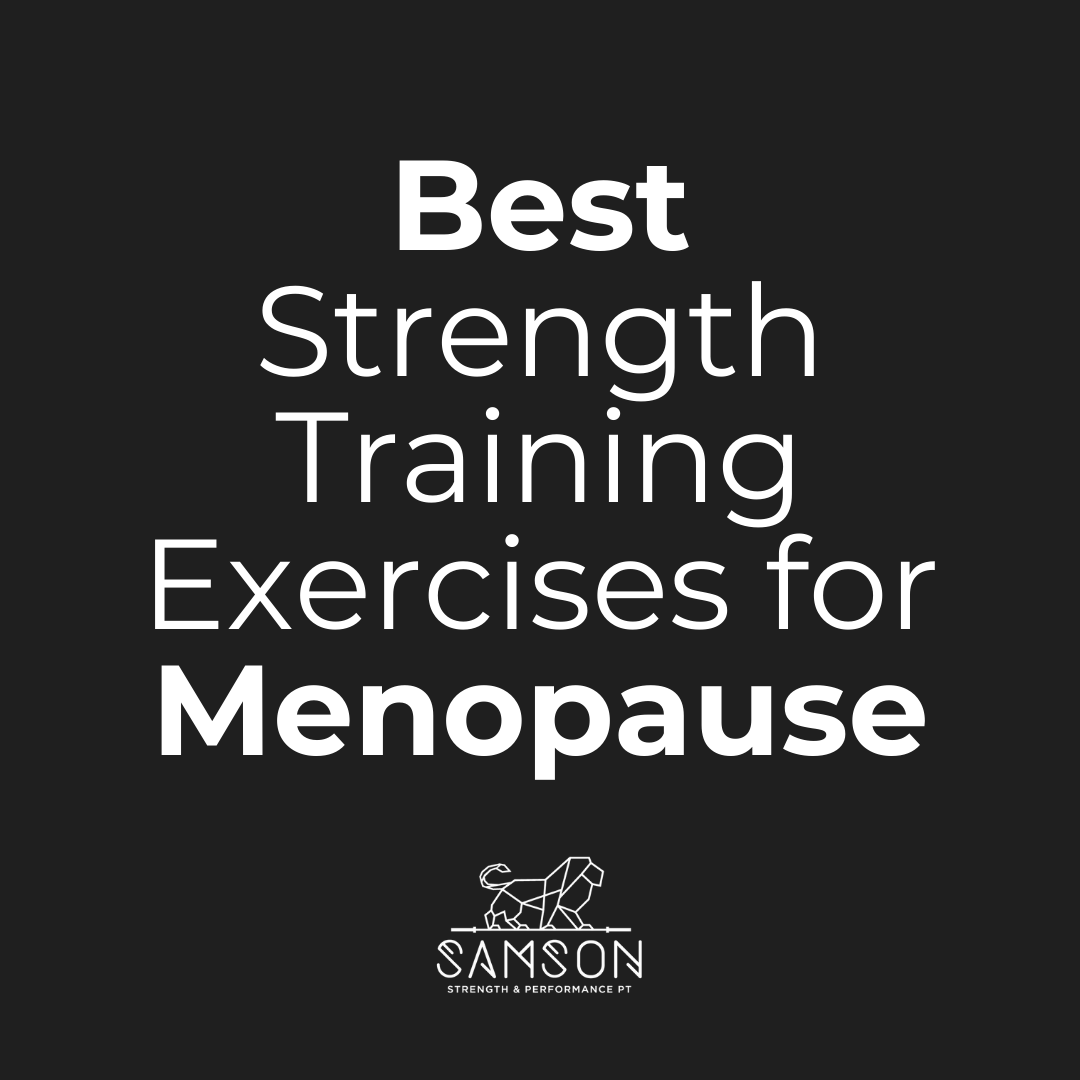Best Strength Training Exercises for Menopause
Menopause is defined as a period of time after which a woman’s period has stopped completely. This is typically diagnosed 12 months after a woman’s last period. Menopause usually occurs within the age range of 40s to 50s in women, but the average age for menopausal women in the United States is 51.
Perimenopause literally translates to “around menopause” and encompasses the time between normal periods and transitioning to menopause. During this time frame, a woman may experience symptoms such as weight gain, hot flashes, irritability, sleep problems, and irregular periods.
Research now shows we should be focused on strength training to decrease symptoms of menopause, improve bone density and protect against sarcopenia (the gradual loss of muscle mass, strength, and function). So many women are finally ready to start lifting!
BUT how do you get started when you are in your 40s or 50s and you have never even thought of strength training? This is a common question I get online and in-person with my clients. I have crossed paths with so many women who are ready to learn to lift, but aren’t sure where to begin. They know they don’t want to go to a gym or join group classes, but they are not sure what to do at home. What are the best strength training exercises for menopause?
In this blog, I will teach you the best strength training exercises for menopause. You will learn about the foundational movements you need to incorporate into your weekly routine in order to get the most out of strength training for menopause.
What are the best strength training exercises for menopause?
This is a question I get from so many women over 40 when they are looking to start strength training. I have a list of 6 non-negotiable movements that should be included in your week based on their functional crossover for daily life. These are movements I use for women and men who are focused on training for longevity and not for sport or aesthetics, although I would argue, they will tick the box of aesthetic goals if you do them consistently.
Here’s my list of the best strength training exercises for menopause:
Squat
Hinge
Upper Body Push
Upper Body Pull
Single Leg Variation
Carry
We will go into each of these briefly, but check out the tutorials on how to properly perform these movements. Incorporate each movement into your weekly strength training routine and you are on your way to a well rounded strength training routine for menopause.
Squats:
Focused on the front of the thigh as a prime mover, but functionally includes the entire leg, core, back, and glutes. Squat variations can include: box squats, goblet squats, dumbbell front squats, cyclist squats, front squats, and back squats.
Hinge:
Focused on the back of the thigh as prime movers, but functionally includes the entire leg, core, back, and glutes. Hinge variations can include: good mornings, Romanian deadlifts, conventional deadlifts, sumo deadlifts, and back extensions.
Upper Body Push:
This can be either horizontal (bench press) or vertical (overhead press) and mainly focuses on chest, shoulders, and triceps.
Upper Body Pull:
This can be either horizontal (rows) or vertical (pull-ups or lat pull downs) and mainly focuses on upper back, lats, and biceps.
Single Leg Variations:
These are either squat or hinge biased and have an added bonus of working on balance.
Carries:
Carry variations typically work on grip and core stability, but can also incorporate shoulder stability, ankle stability, and endurance.
Things can feel overwhelming at first, but remember, a small step is still a step in the right direction. Begin incorporating some of these movements into your routine with the goal of getting all six movements in throughout each week. Form and technique are key in the beginning to build a better foundation to get stronger and increase bone density as you age while staying safe and injury-free. If you are unsure of your form, search out a seasoned professional who focuses on form and get some help.
Feeling stuck and want help?
If you’re finding it hard to start, finding an in-person program can make a big difference. At Samson Strength and Performance PT, we specialize in helping women find their strength with semi-private personal training led by a doctor of physical therapy. Dr. Delilah also offers online remote coaching options and tons of free resources in her newsletter. You can sign up for her newsletter or schedule a discovery call below if you are ready to get started.
References:
Capel-Alcaraz AM, García-López H, Castro-Sánchez AM, Fernández-Sánchez M, Lara-Palomo IC. The Efficacy of Strength Exercises for Reducing the Symptoms of Menopause: A Systematic Review. Journal of Clinical Medicine. 2023; 12(2):548. https://doi.org/10.3390/jcm12020548
Hejazi K, Askari R, Hofmeister M. Effects of physical exercise on bone mineral density in older postmenopausal women: a systematic review and meta-analysis of randomized controlled trials. Arch Osteoporos. 2022 Jul 27;17(1):102. doi: 10.1007/s11657-022-01140-7. PMID: 35896850.
Mishra, Nalini; Mishra, V. N.1; Devanshi, 2. Exercise beyond menopause: Dos and Don’ts. Journal of Mid-life Health 2(2):p 51-56, Jul–Dec 2011. | DOI: 10.4103/0976-7800.92524

